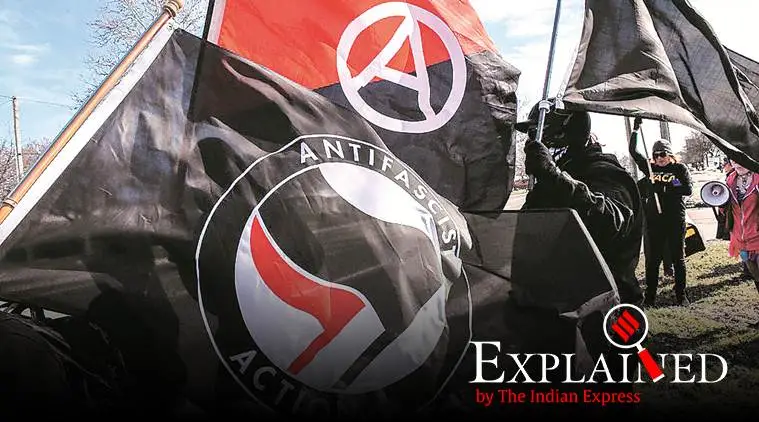Antifa: why America is talking about group that uses violence with ‘fascists’
The Portland violence happened during a pro-Donald Trump demonstration by the Proud Boys and a counter-protest by Antifa members.
 Antifa flags at a protest in the US last year. (Reuters)
Antifa flags at a protest in the US last year. (Reuters)
On June 30, members of a far-left group called Antifa clashed with those of a far-right group called Proud Boys in Portland, United States. While the Proud Boys are known as a white supremacist, exclusively male group based in the US and with a presence in a few other countries, the violence has turned the spotlight on Antifa, which has a more international background and gained prominence only recently in the US.
The Portland violence happened during a pro-Donald Trump demonstration by the Proud Boys and a counter-protest by Antifa members. It left members of both sides injured, including a journalist with a conservative-leaning publication. Conservatives such as Senator Ted Cruz of the Republican Party have accused the city administration of not doing enough to curb the Antifa protesters, while former New York City police commissioner Bernard Kerik has been quoted as calling for Antifa to be declared a domestic terrorist group.
The group
Antifa has been around for several decades, though accounts vary on its exact beginnings. The Merriam-Webster dates it as far back as Nazi Germany, describing the etymology of ‘antifa’ as “borrowed from German Antifa, short for antifaschistisch ‘anti-fascist’, in Antifaschistische Aktion (multiparty front initiated by the German Communist Party in 1932 to counter Nazism) and in other collocations”.
While the movement has had a presence in several European countries and has now come into focus in the United States, Antifa does not have a formal organisational structure. The New York Times said it draws its members from other movements such as Black Lives Matter and the Occupy movement.
The movement has been known to have a presence in the US in the 1980s. It shot into prominence following the election of President Trump in 2016, with violence marking some of its protests and demonstrations.
Antifa members typically dress in black and often wear a mask at their demonstrations, and follow far-left ideologies such as anti-capitalism. They take up causes such as LGBTQ and indigenous rights. What makes them stand out is the violence.
Criticising mainstream liberal politicians for not doing enough, Antifa members have often physically confronted their conservative opponents on the streets, although the group also participates in non-violent protests. Apart from public counter-protests, Antifa members run websites that track white extremist and ultra-right groups.
Recent activities
The current group of Antifa members, according to media reports, appears to be a loose affiliation of activists opposing right-wing groups and white supremacists. Antifa groups do not have a uniform presence in the US, with their activity most prominent in the states of Oregon (which includes Portland), California, Texas, and Pennsylvania.
Antifa members engaged in street clashes in Charlottesville (Virginia) in 2017, following a large demonstration by right-wing radicals. The same year, Antifa members were accused of disrupting a conference by a conservative leader at the University of California at Berkeley. In 2016, a member of the group had punched a right-wing leader on camera, The New York Times reported.
Because of Antifa’s repeated involvement in violence, many liberal figures have criticised the group for bringing disrepute to existing anti-fascism movements the country. Antifa’s activities, they note, allow right-wing organisations to portray organisers of peaceful events, too, as extremists. Writer and social commentator Noam Chomsky has been quoted as calling the Antifa “a major gift to the right”. Many have pointed out that major substantive reforms, such as the Civil Rights Act of 1964 and the ending of formal racial segregation, were achieved after years of non-violent disobedience.
- 01
- 02
- 03
- 04
- 05






































